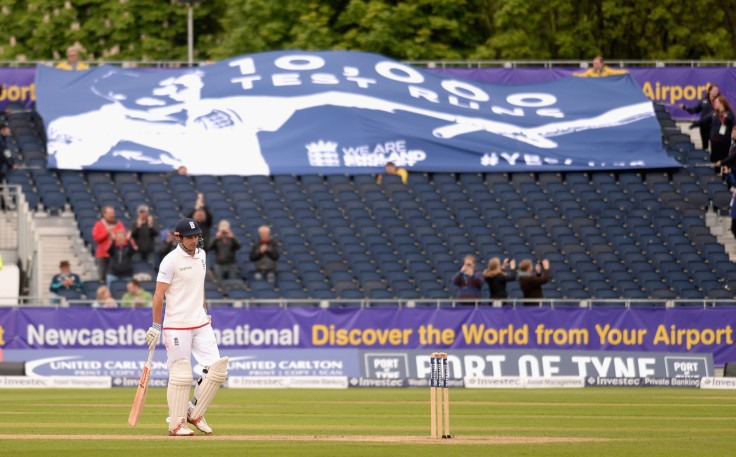Test cricket can still be the future despite the T20 takeover

As the Indian Premier League cricket season came to a firework-fuelled frenzy of a finale in the heat of the M. Chinnaswamy Stadium in Bengaluru, two men and his dog were watching England beat Sri Lanka in chilly Durham. The growth of the IPL – and the desire to recreate this model around the cricketing world – is in stark contrast to the trials and tribulations of Test cricket. England have outclassed Sri Lanka for two matches in front of disappointing-sized crowds and despite being the home of the format, other nations have doubts.
IPL markets itself as the future of the sport. It is brash and exciting, based in the largest cricketing market in the world, featuring the game's biggest names, in a bite-sized format which lends itself to the modern length of the average attention-span. Test cricket meanwhile takes place over five days and can often fail to produce a winner. The white uniforms echo days long gone. To the sport's ultra-modernizers long-form cricket is the past.
English Premier League of cricket has prompted a bevy of lookalikes. Australia launched The Big Bash which already attracts record-breaking crowds; The Caribbean Premier League is the West Indies' version of the format and the local cricket board's attempt to revitalise the sport across the region.
The Windies' biggest stars now opt to play T20 cricket around the world rather than represent their 'nation' in test matches. The politics of West Indies cricket is important, but so too is simple mathematics: Chris Gayle and others are paid far more to play in the condensed T20 format than they are to play test cricket.
The monster-hitting Gayle is now a superstar who plies his trade with teams around the world who are prepared to pay big for his pyrotechnics. He plays for the Royal Challengers Bangalore in the IPL, the Lahore Qalandars in the Pakistan Super League, the Renegades in the BBL, the Dhaka Gladiators in the Bangladesh Premier League and Somerset in England's T20 Blast.

England's counties have – like the IPL market-leaders – adopted 'brands'. This has been so successful that Yorkshire, the biggest and most-successful county in the history of the game, have changed their name three times already: Phoenix became Carnegie became Vikings. This is clearly a branding bid to move away from the old whimsical world to the shiny new one, but it is ill-considered.
Youngsters no longer regularly see cricket's stars because the ECB sold all its live rights to pay TV. Watching the biggest stars in the flesh is obviously an attraction. But the ECB is right to fear putting all its eggs into the T20 basket. Not least because the English weather can frequently be a major dampener: one wet summer and the game could be close to bankruptcy.
Despite the poor crowds for northern test matches thus far this summer and the problems that the longer format has around the world, it is also an enormous revenue raiser for the ECB. Test matches in London's grounds – Lord's and the Oval – sell out. Corporate hospitality at the capital's Test matches is also highly profitable while much of Sky's interest in English cricket is how it fills hours of the summer schedule.

For these revenue raisers to thrive, English cricket needs Test match cricket to continue. For it to survive, and thrive, the cricket playing world needs to continue to value it. Australia supports the format well-enough: Ashes test matches sell-out, but series against other countries are not the must-see events they once were. The day/night Test experiments are set to continue, allowing more fans to attend and watch outside of regular working hours.
While the short-sighted might see the differences between T20 and Test cricket as a battle for the soul of the sport, the two should not be seen as mutually exclusive. The best players are good at both. Both can attract big crowds and major revenues.
T20 has revolutionized the way the game is played. Test cricket has become more attacking and exciting as a result. But sport – and life – is about more than cheap thrills. Long form cricket, whether it be four or five days, brings other virtues that we would be foolish to discard: patience, obduracy, consistency, rewards that have to be worked for. Test cricket faces a similarly agonising wait.
© Copyright IBTimes 2025. All rights reserved.






















